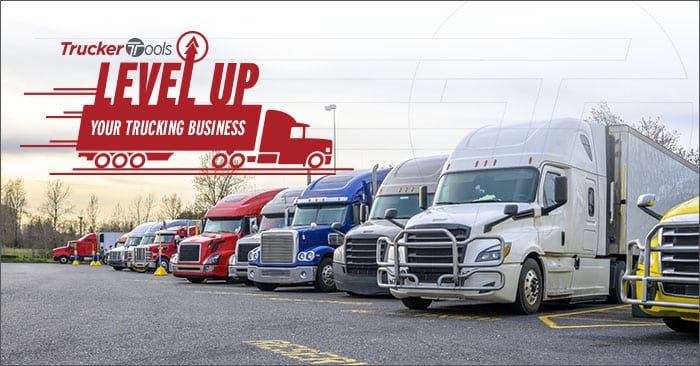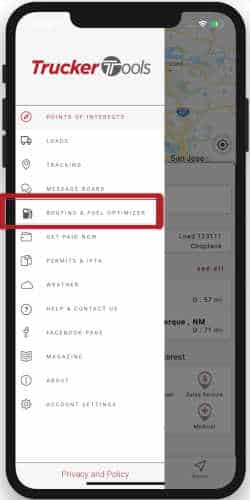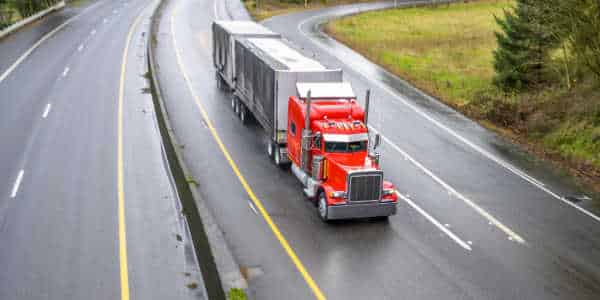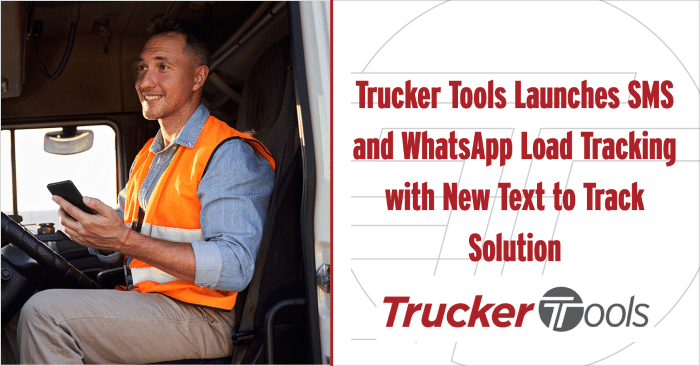Level Up Your Trucking Business: Reduce Variable Costs To Increase Your Take-Home Revenue

As an owner operator, you wear two hats: driver and small business owner. One of the biggest challenges you’ll face as driver and small business owner is balancing your expenses and your profit margins on loads. According to Indeed, the average gross pay for an independent owner operator is about $280,000 each year, which sounds like a great salary. Keep in mind, however, that 70 percent or more of that income will likely be eaten up by your operating expenses in the form of paying for your truck/lease, smart phone, fuel, meals, maintenance, tires, tolls, truck insurance, health insurance, licenses, permits, taxes, lodging, load board subscriptions, association fees and other expenses.
In business, you have two ways to increase your profits: you can either reduce your expenses or add to your revenue. As a one-person owner operator business, adding to your revenue means working more hours, which can be difficult or outright impossible if you’re already driving the maximum number of hours allowed by the DOT. The best way to increase your net profits as an owner operator is to reduce your operating expenses. In this blog, we examine the different types of expenses you have as an owner operator and outline ways that you can reduce your variable costs to maximize your profit margins.
Understanding Your Fixed and Variable Costs
Your expenses/costs can be broken into two different categories, fixed or variable. Fixed costs are your operating expenses that, for the most part, don’t change from month to month regardless of how far or whether or not you run your truck. Fixed costs include truck/lease payments, truck/trailer insurance premiums, cargo insurance, health insurance premiums, permits, licenses, professional services (bookkeeping, accounting services) and taxes.
Variable costs are those expenses that go up or down based on the operation of your truck. Generally, the more you run your truck, the higher your variable expenses. Your variable costs as an owner operator include expenses such as fuel, repairs, maintenance, truck washes, smart phone/cell service, food, lodging, tolls, fines, cargo claims, load board fees and tires.
Use Real-Time, App-Based Technology To Reduce Your Fuel Expenses
Fuel is typically your highest expense as an owner operator. Last week, Transport Topics reported that the national average cost for diesel was $3.191/gallon, which is an increase of nearly 17 percent over the last year. Needless to say, saving money on fuel is more important than ever. Using technology such as Trucker Tools’ free driver app makes it easy for you to find the cheapest fuel on your routes. Simply open the driver app and tap on the routing and fuel optimizer on the main menu and you’ll be prompted to enter your destination. Once you do, you’ll see the cheapest fuel stops along your route, including the price of fuel at each location. If you tap on a fuel stop, you can see if amenities such as parking, restrooms, showers and food are available onsite, as well, which assists you with trip planning.

Eliminate Subscription Fees, Time Lost with Load Boards
Even if you only use load boards occasionally, load board subscription and access fees can add up, especially if you use more than one load board. Several load boards also recently have increased their fees, which further adds to the expense of load boards. There are hidden costs associated with using load boards to consider, as well. Load board technology is not real-time technology, which is why you may find yourself spending an hour or more trying to find and book a single load via a load board. By the time you reach the broker, the load may already be gone, which means you just wasted an hour and have nothing to show for it.
Instead, consider using real-time load search and load booking technology that lets you find and book loads in seconds. With the Trucker Tools driver app, you can search for and book loads with your favorite brokers with a few taps in the app. You have 24 hour access to your favorite brokers’ loads and can see what loads they have available at times that are convenient for you — not just during daytime hours. The best part about the Trucker Tools driver app’s load search and booking tools is that they’re free, which means you save both time and money.

Get the Information You Need Instantly with Trucker Tools’ Free Driver App
Any down time that you have during your day, i.e. times when you’re not driving, represents lost revenue. Trucker Tools’ real-time, app-based technology lets you find the nearest weigh scales, truck stops, rest areas, repair shops, DOT locations, Wal-Mart grocery stores, parking, hospitals and truck dealers in seconds. You don’t need to have five or six apps open or use Google to find what you need. Simply open the Trucker Tools driver app and get the information you need instantly. You also can use the Trucker Tools driver app to calculate your axle weights and to find a local attorney to help you with tickets and violations. When you spend less time looking for what you need, you can spend more time driving making and money.
You also can use the Trucker Tools driver app to track loads for brokers and 3PLs. Doing so often reduces the number of check calls you receive when you’re on a load. It also means that brokers won’t be calling you for a location update when you’re on a break or trying to get some sleep. The digital freight tracking tool included in the Trucker Tools driver app also can be used with most brokers and shippers, which means you don’t have to download a new load tracking app every time you pull a broker load — and that saves you lots of time and headaches.
For more on how you can run a profitable, self-sustaining owner operator business, read Level Up Your Trucking Business: Reduce the Time You Spend on Negotiating, Booking Loads with Your Favorite Brokers.
To download Trucker Tools’ free driver app, visit https://www.truckertools.com/carriers-toolkit/.





